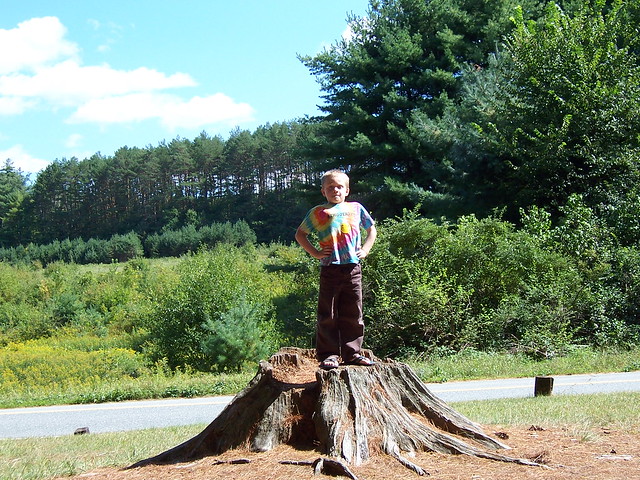 |
The Child and Nature Network has been busily compiling together the evidence base for nature and health. While it is important for an advocacy group to do this, I find it somewhat biased from my perspective as an epidemiologist – where are the studies that examined these types of relationships but didn’t find anything? So like any good epidemiologist would do, I set out to look for some systematic reviews and meta-analyses.
Without much looking I came across a recent systematic review that sought to examine studies that compared health outcomes in natural and synthetic environments, usually over a short duration. Twenty-five studies were included, with most being cross-over or controlled trials; although seven were randomized controlled trials. The most common outcomes were scores on various self-reported emotions. This is somewhat problematic in that respondents often can guess what is being studied (especially if it’s a non-randomized cross-over study) and will sometimes adjust their responses. More robust study designs (such as RCTs or at least randomizing order of exposure to each of the environments) can help to mitigate this bias. Other common outcomes included physiological measures such as cardiovascular functioning (blood pressure or pulse), and hormone levels (salivary or urinary cortisol, amylase, and adrenaline). Less common outcomes included immune function, physical activity, motor performance, cerebral brain activity, engagement, memory recall, and sleeping hours. There were too few of these to conduct a meta-analysis so I won’t discuss them further – you can get more info here.
The meta-analysis revealed (see Table 1 above) a possible benefit of natural versus synthetic environments for energy, anxiety, anger, fatigue and sadness. No benefit was seen for more objective measures like blood pressure and cortisol levels. There was a benefit reported for attention before effect sizes were adjusted for baseline levels. Because only 3 out of the 5 attention studies had baseline measures, this may have reduced statistical power, as the effect size decreased only slightly but the confidence interval increased.
Important points to keep in mind:
· Most of the included studies were experimental in design and included college students, adult males, or physically active adults – so the overall finding of the meta-analysis is not generalizable to the overall population, or to children
· Outcomes were examined over a very short duration. Some beneficial effects may take longer to manifest and/or require repeated or prolonged exposure to the natural environment
· We’re not sure what exactly in the natural environment is responsible for these beneficial effects. Does this matter?
· I am a little concerned with regard to the small number of studies, as well as study quality (this was not formally assessed). We may find a different association with a larger number of high quality studies
What does this all mean then? Over the short-term natural environments may reduce negative emotions and improve energy levels but they don’t appear to improve some cardiovascular and endocrine measures of health. Of course, I have to add the requisite last line: ‘more studies of high quality are needed,’ to make any definitive conclusions.
Now from my own expertise and knowledge, I know that there have been more and more studies conducted to determine how the residential environment influences physical activity and/or obesity. This is a difficult area of research – perhaps why results have been mixed and effect sizes often small in comparison to the effects of individual and family characteristics. As I discussed in a previous post, some of these studies have found a positive association between the availability/amount of green space and the physical activity and obesity levels of area residents (in both adults and children). For the most part however, these have been cross-sectional associations, and overall, findings are not consistent from study to study. Putting this aside, we’re not even sure if it’s the greenery itself or simply the open space that invites people to be more physically active. Certainly greenery adds to the aesthetics and quality of the built environment, and aesthetics, as a general theme, has been previously associated with physical activity and obesity (see my previous post). Who knows though, we’d have to ask people why.
In summary, the evidence of nature and health isn’t hugely convincing but not dismissive either – it’s there in some form. What we don’t know is whether it’s simply being active and away from our gadgets that helps the most – perhaps it’s not necessarily the ‘nature’ itself. Whether it’s the chicken or the egg doesn’t really matter to me and probably will never be totally discernible. As a society we are much more sedentary then in days gone by, and so it follows, less connected to nature. Green spaces can recycle the harmful outputs of urban living and add to the quality of our living spaces. To me, these two concepts go hand in hand. Paraphrasing a remark made by the artist Robert Bateman that was reiterated by Mr. Louv: if we don’t know about nature, we will be less likely to care for it and do something to preserve it. This is especially important among our children who will be the ones left to take care of the planet. Getting outside gets us physically active and connected to nature. So even though the evidence may not be sound, there is no harm in advancing this issue – it can only improve the quality of our spaces and help to sustain the world for future generations. Perhaps what is needed now are well conducted intervention studies to determine how green spaces can best be designed to maximize health, well-being, and sustainability benefits.
Bowler DE, Buyung-Ali LM, Knight TM, & Pullin AS (2010). A systematic review of evidence for the added benefits to health of exposure to natural environments. BMC public health, 10 PMID: 20684754

No comments:
Post a Comment